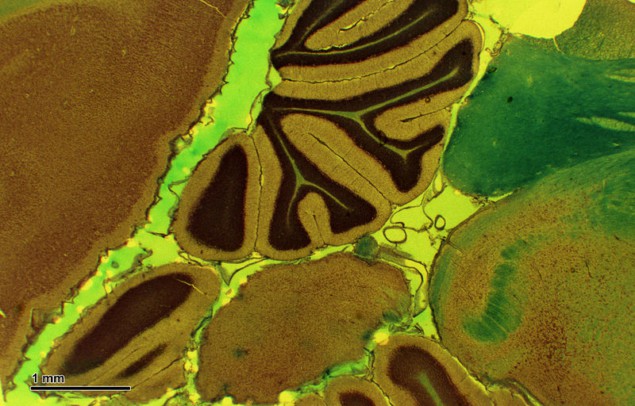
A neural probe able to monitor the activity of hundreds of neurons simultaneously has been designed and constructed by researchers in the UK, the US, Canada and Belgium. The new device, dubbed “Neuropixels“, squeezes 960 titanium nitride recording sites onto a single, 10 mm-long silicon strip (or shank), with 384 user-programmable recording channels.
High resolution, large area
Direct measurement of large ensembles of neurons in the brain is essential for our understanding of sensory, motor and cognitive processes. For the best insight into brain dynamics, experiments must exhibit high spatiotemporal resolution and large volume coverage.
A previous experiment demonstrated simultaneous measurement of 300 neurons using a 16-shank configuration, but the size of the associated amplification and multiplexing equipment made it unsuitable for long-term use in mobile subjects. Achieving the same resolution and coverage in a device engineered for unrestrained animals has been challenging.
As well as employing a dense and extensive array of recording sites, the multi-institute collaboration also needed their new probe to have a small cross-sectional area (to minimize brain damage), to be resistant to noise and motion-induced artefacts, and to allow stable recording over weeks and months.
Integrated design
The design that the researchers came up with has a 70 × 20 µm cross-section and a base in which the analogue amplifiers, multiplexers and digitizers are integrated. This makes the complete setup small, and light enough to be implanted chronically into freely moving mice. Furthermore, because the device was fabricated using a standard complementary metal–oxide–semiconductor (CMOS) process, it can be manufactured at large scale and low cost.
The group demonstrated the effectiveness of the Neuropixels instrument by making recordings of hundreds of neurons in mice and rats over more than eight weeks, and finding no sign of performance degradation. As the probe length is of the same order as the rodents’ brain size, the device can span several brain structures simultaneously, helping to reveal how neural activity is co-ordinated during waking behaviour.
Full details of the research are published in Nature.



